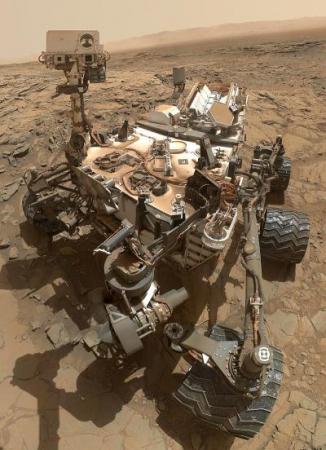Mars Rovers

Credit: NASA
Mars rovers are vehicles that travel across the surface of Mars. They can be controlled from Earth, or programmed to work on their own. They are much more useful than landers, which do not travel around. Rovers can cover more ground and be directed to interesting things. They can also put themselves in sunny positions to charge their batteries and survive the winter.
There have been five rovers land on Mars as planned:
Sojourner was the first robot rover to successfully land on Mars in 1997. It explored the surface of the planet for 3 months. It used solar power during the day and a large battery during the night. Sojourner had cameras facing forwards and backwards, and many other scientific instruments. It sent back hundreds of pictures of the surface of Mars. It also studied the weather and found out what some of the planets rocks were made of.
Spirit and Opportunity were both part NASA's Mars Exploration Rover mission. They launched in 2003, and landed on opposite sides of the planet. In 2009, Spirit became stuck in soft soil on the surface. The rover took scientific data until 2010 when it stopped sending signals back to Earth. Whilst it was active it found out that Mars was once much wetter than it is now. Opportunity worked on the surface of Mars for a total of almost 15 years! The rover studied meteorites, craters, and the Martian soil. It found out that Mars would once have been able to sustain life.
Curiosity is part of the NASA Mars Science Laboratory. It landed on Mars in 2012 and is still working over 10 years later. It is the size of a car and is studying the planet to check for any signs of past life.
On 18th February 2021 Curiosity was joined by another NASA mission: Perseverance.
The Perseverance rover has one main mission: to seek out signs of ancient life. The rover has a drill to collect rock samples from beneath the surface. It has also tested new technology which will help humans to one day go to Mars. This includes flying the first helicopter on another world - Ingenuity.

